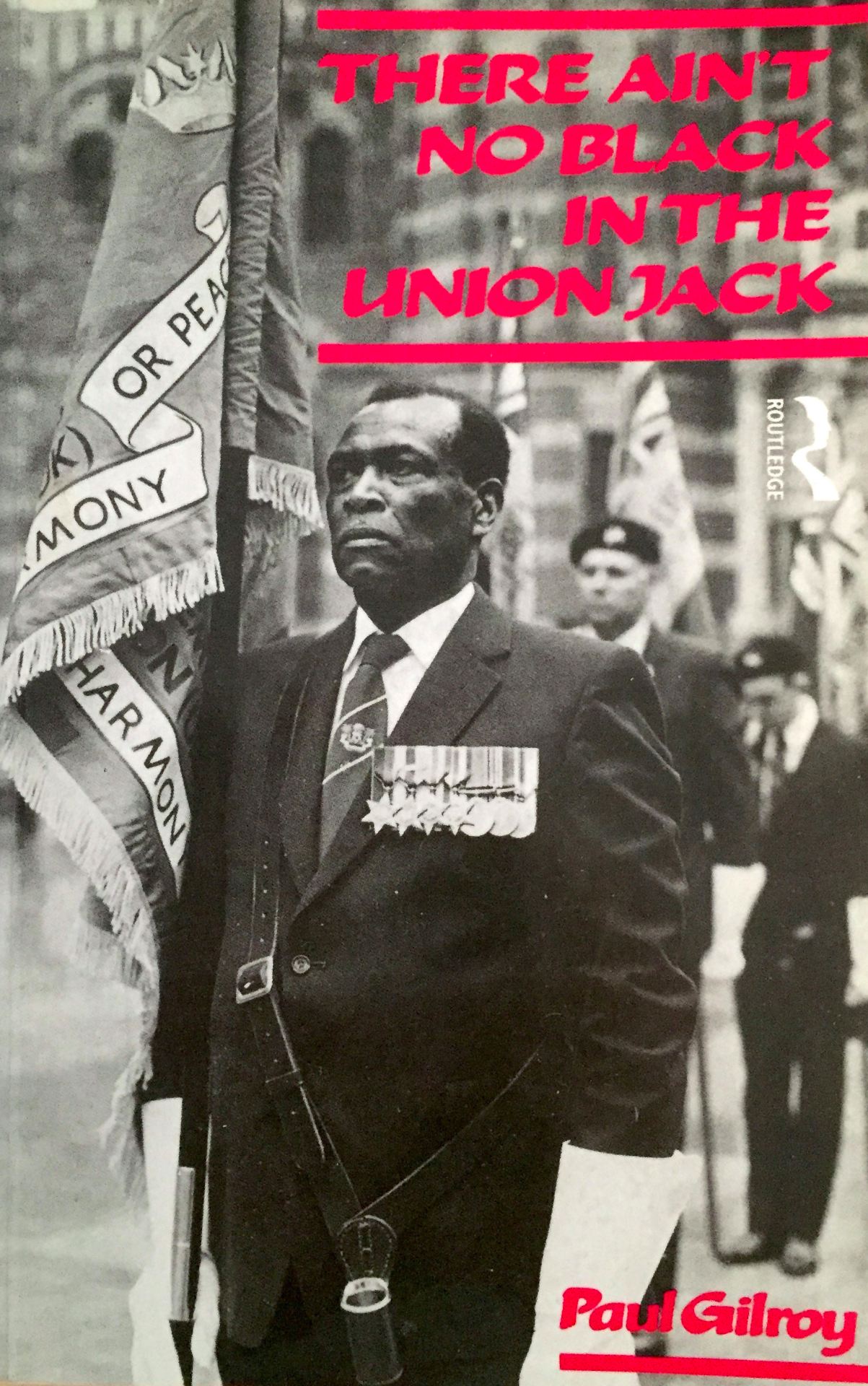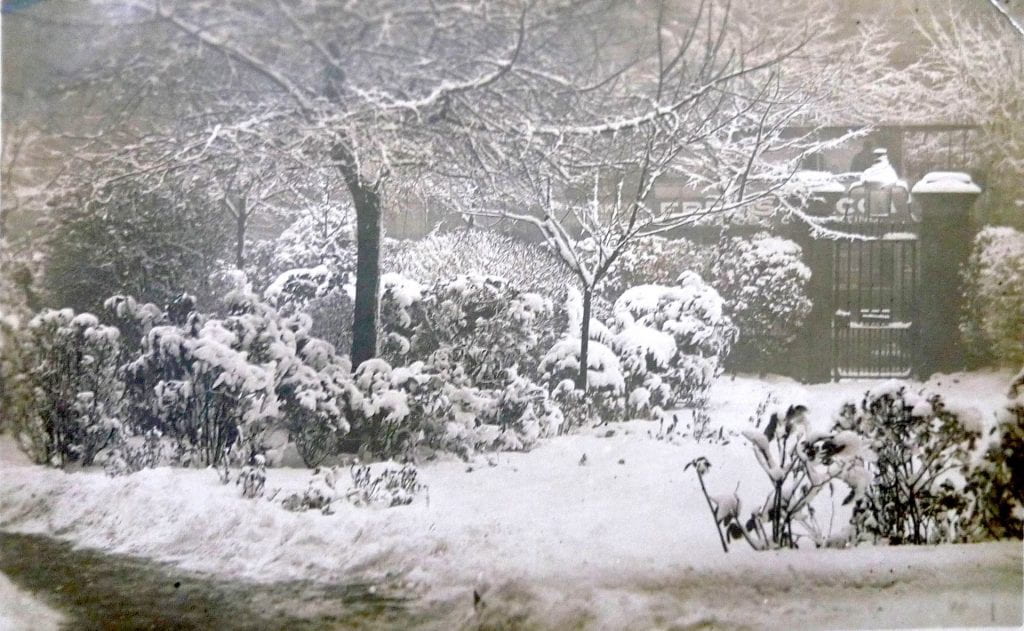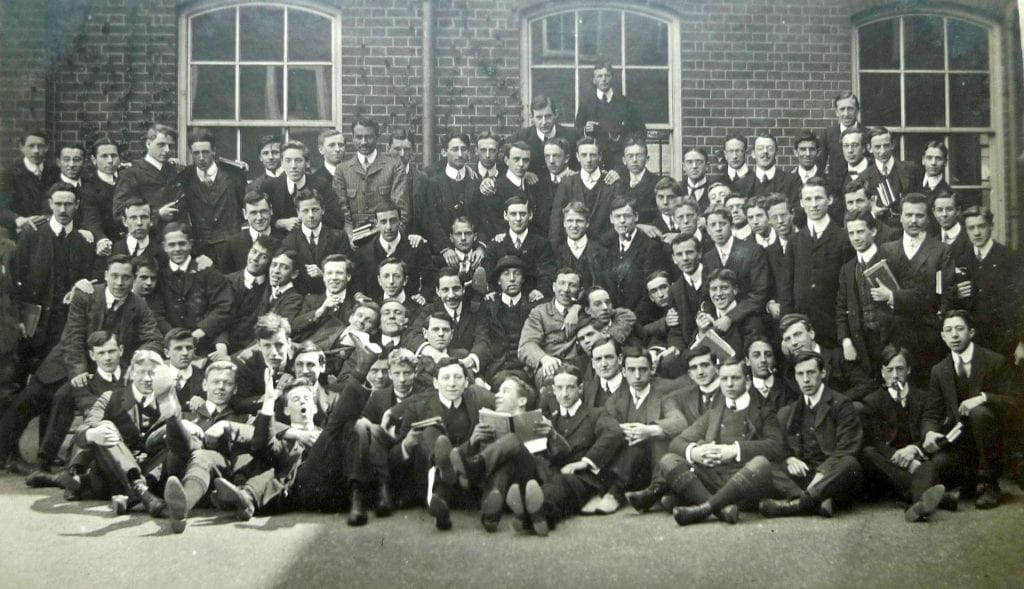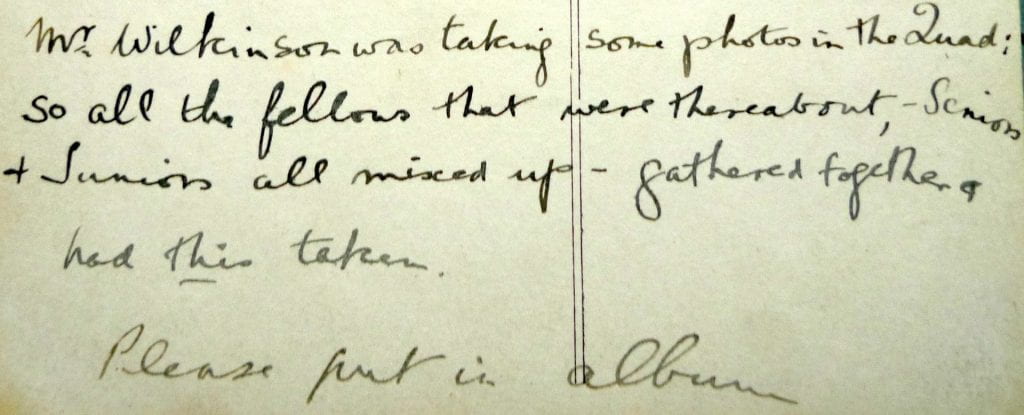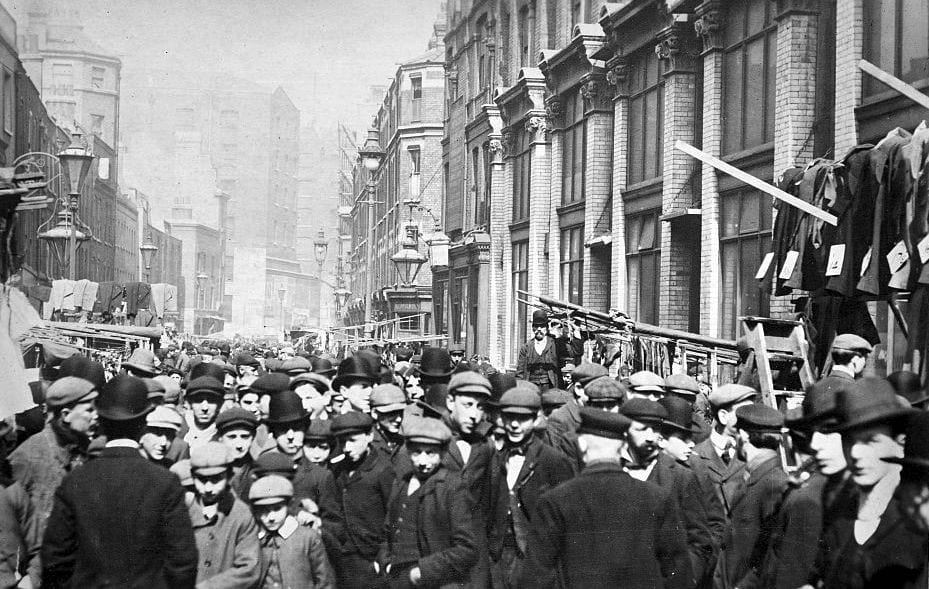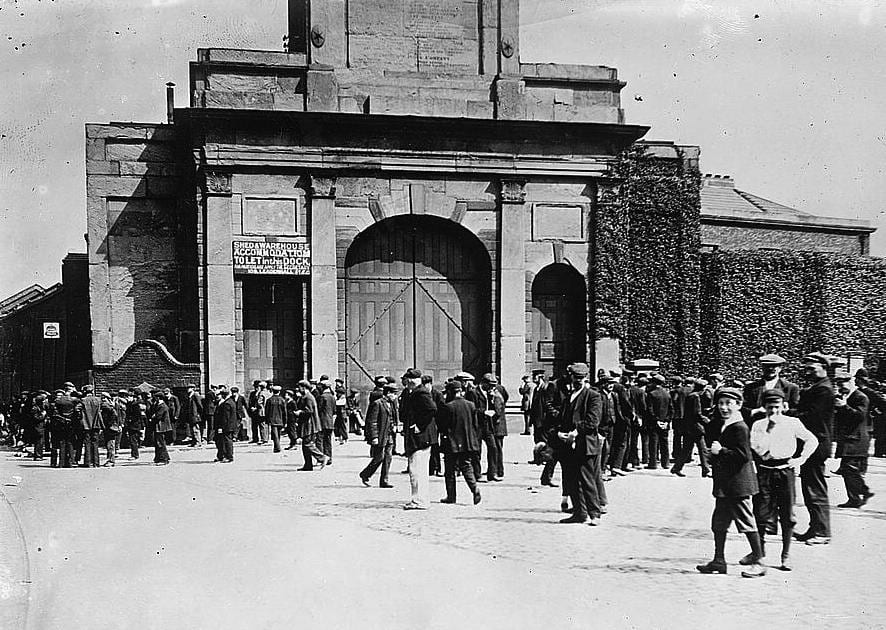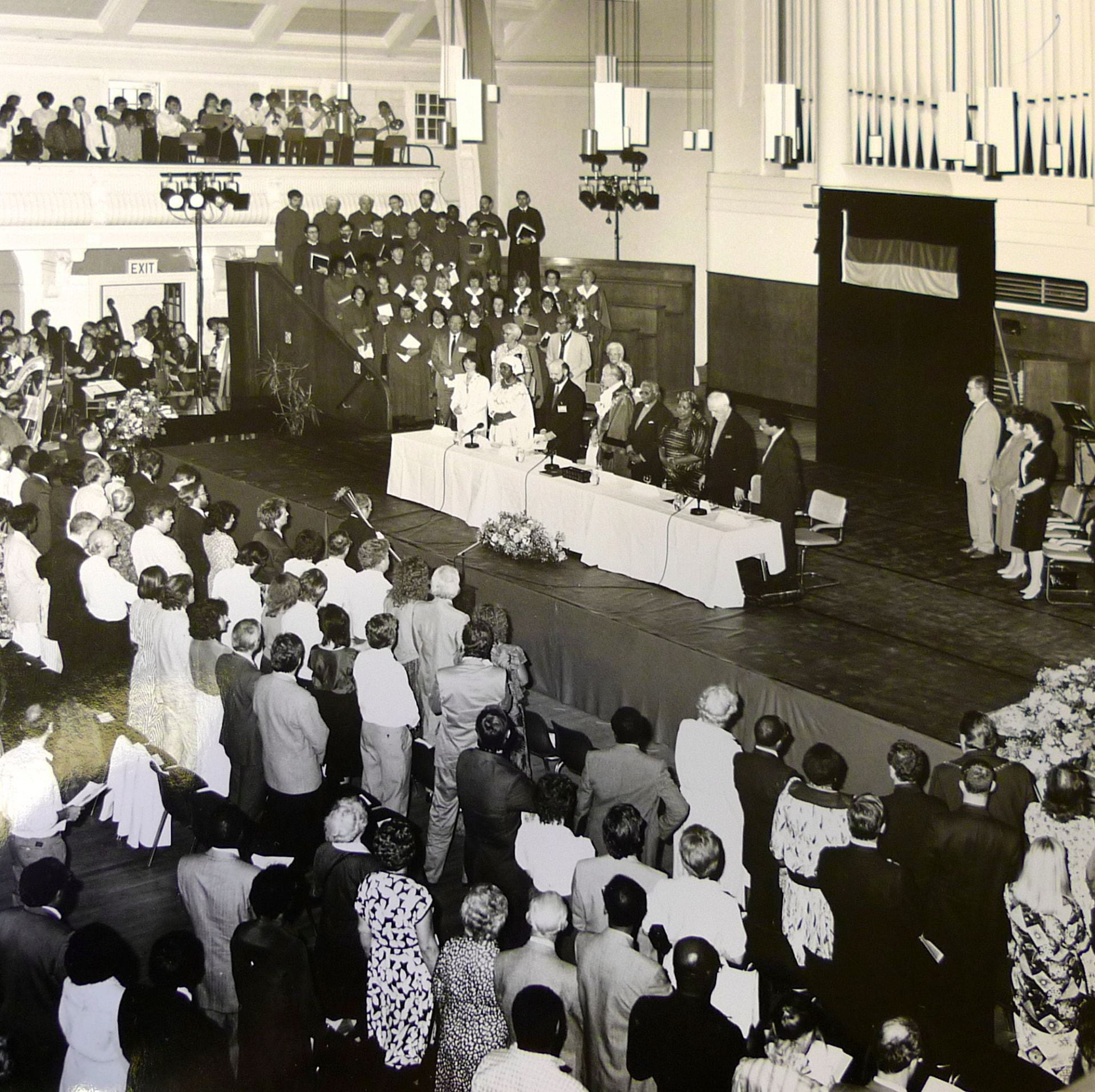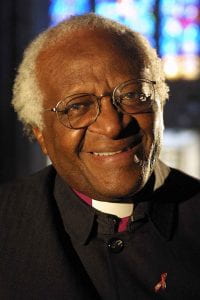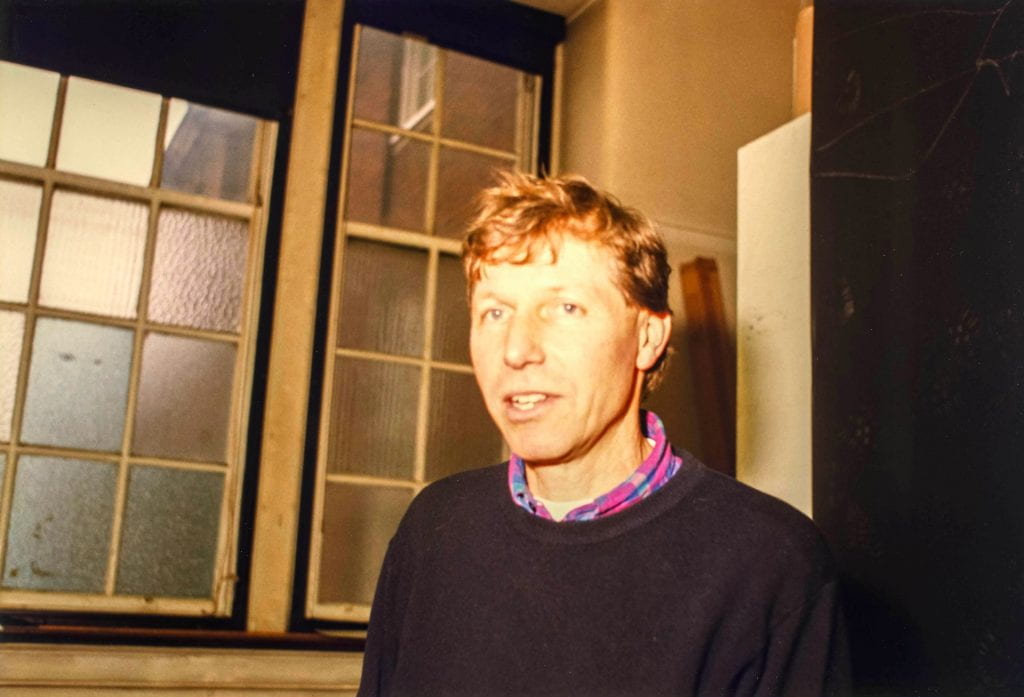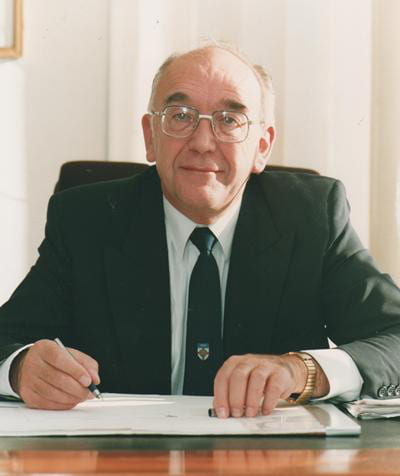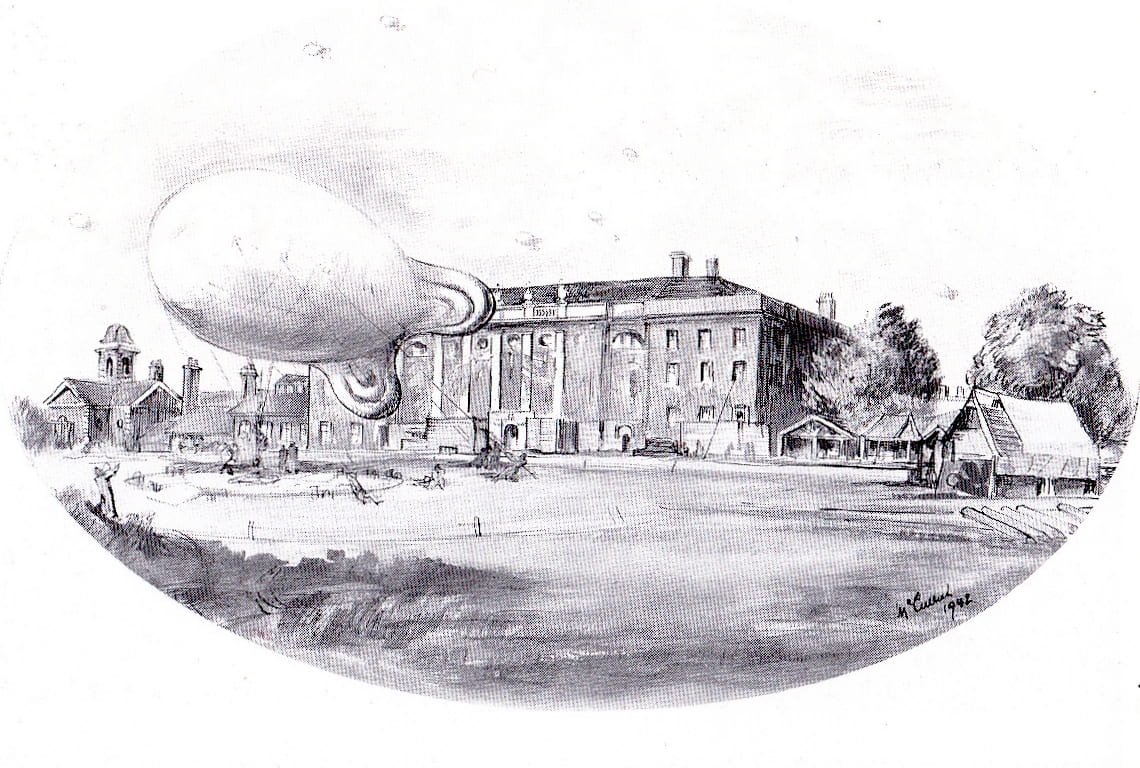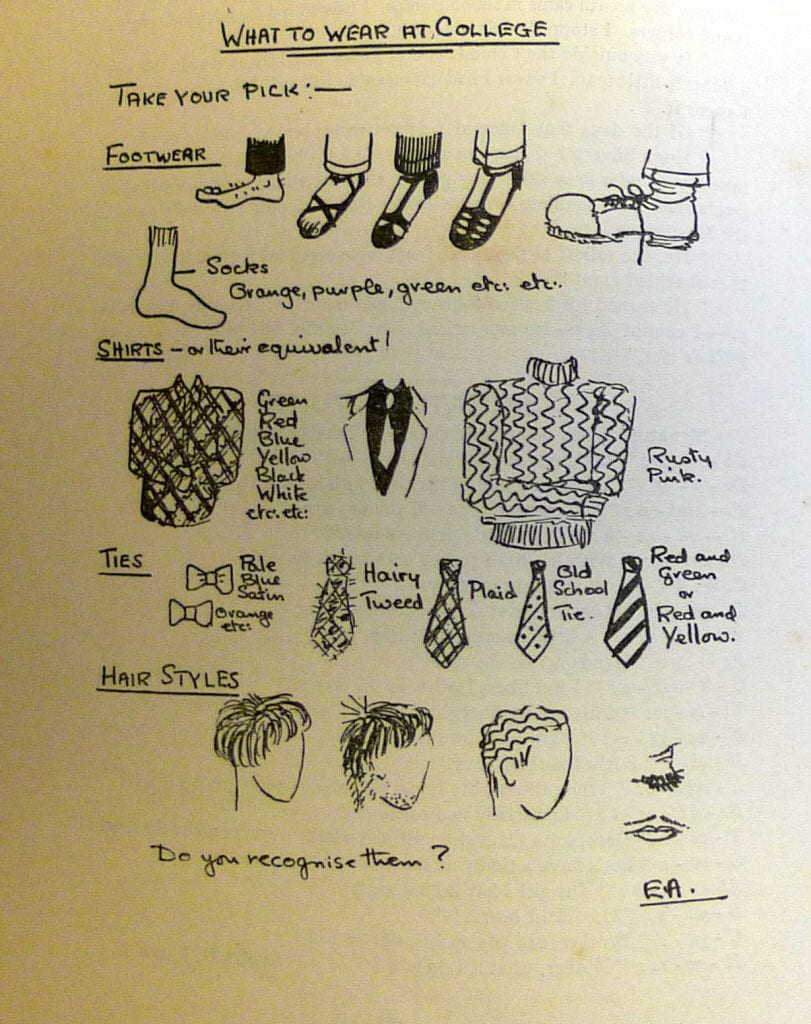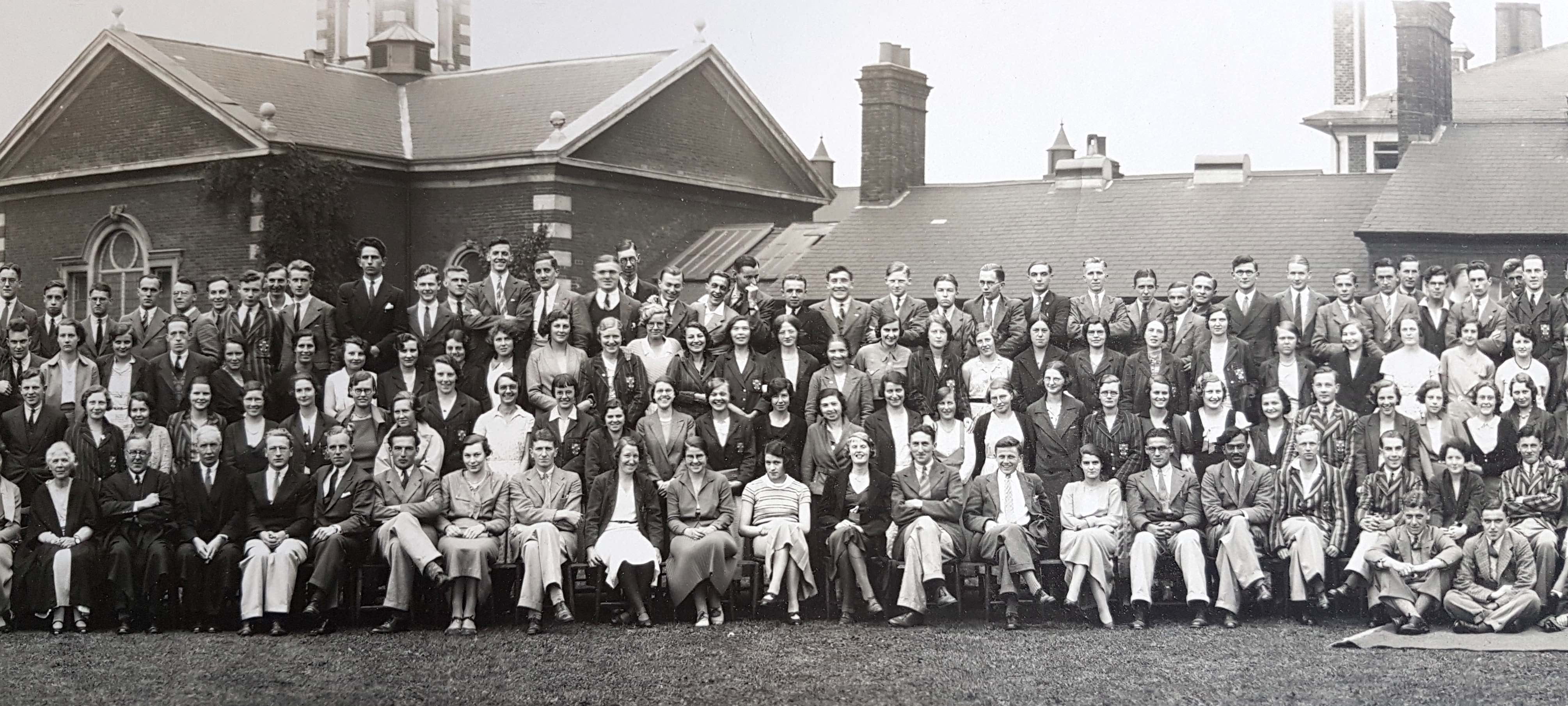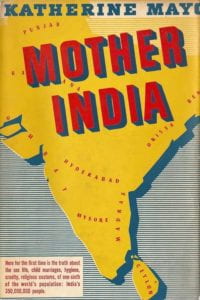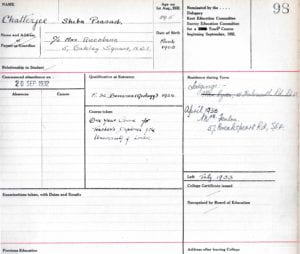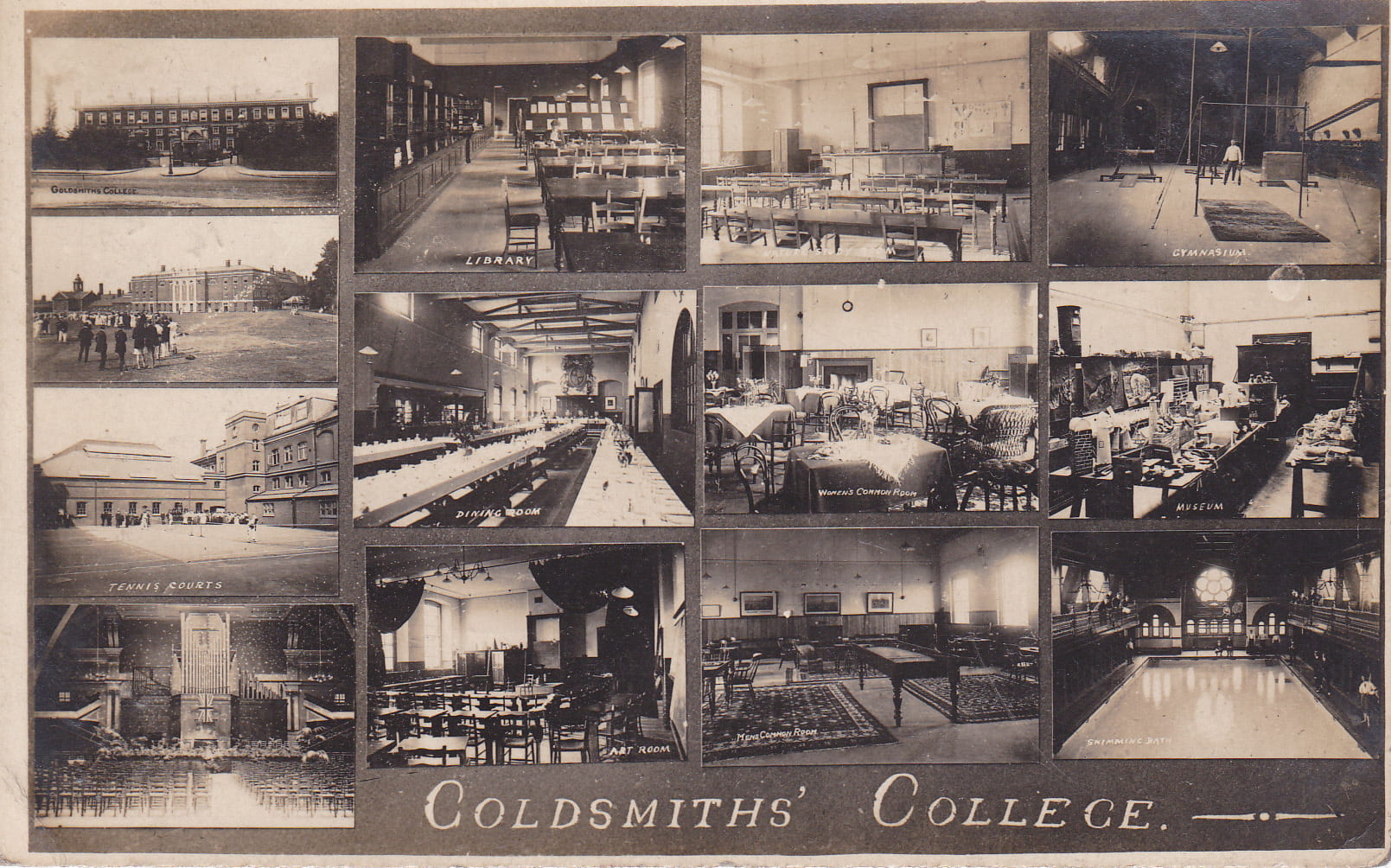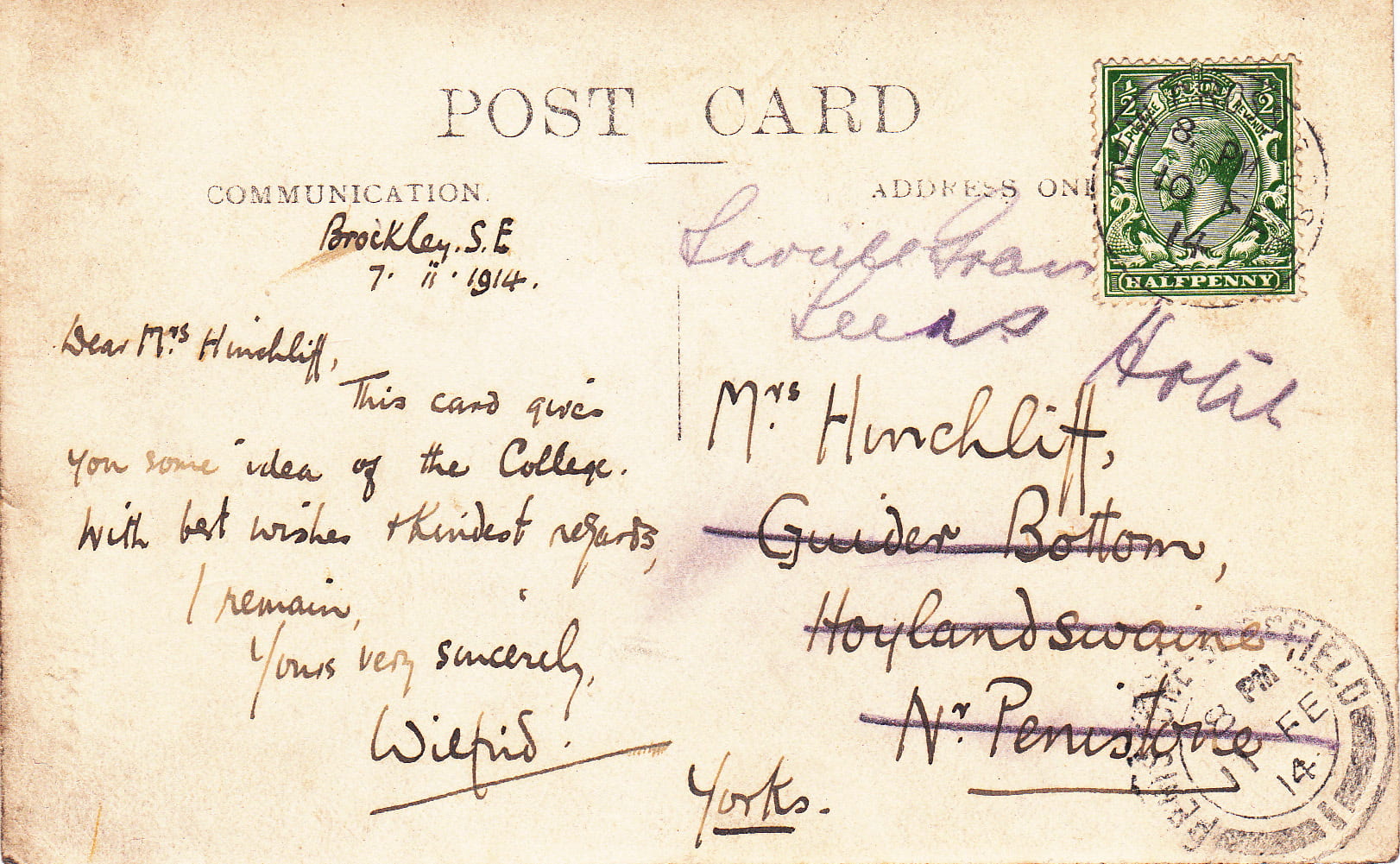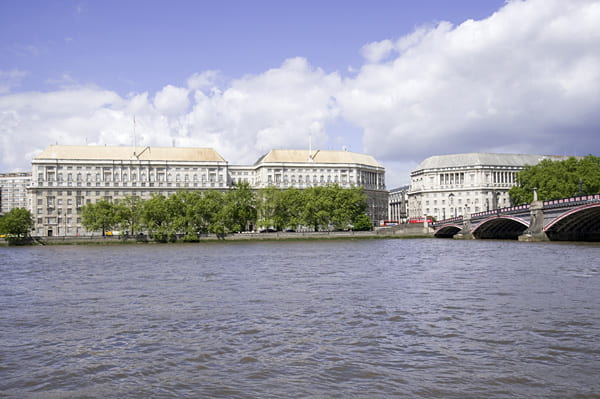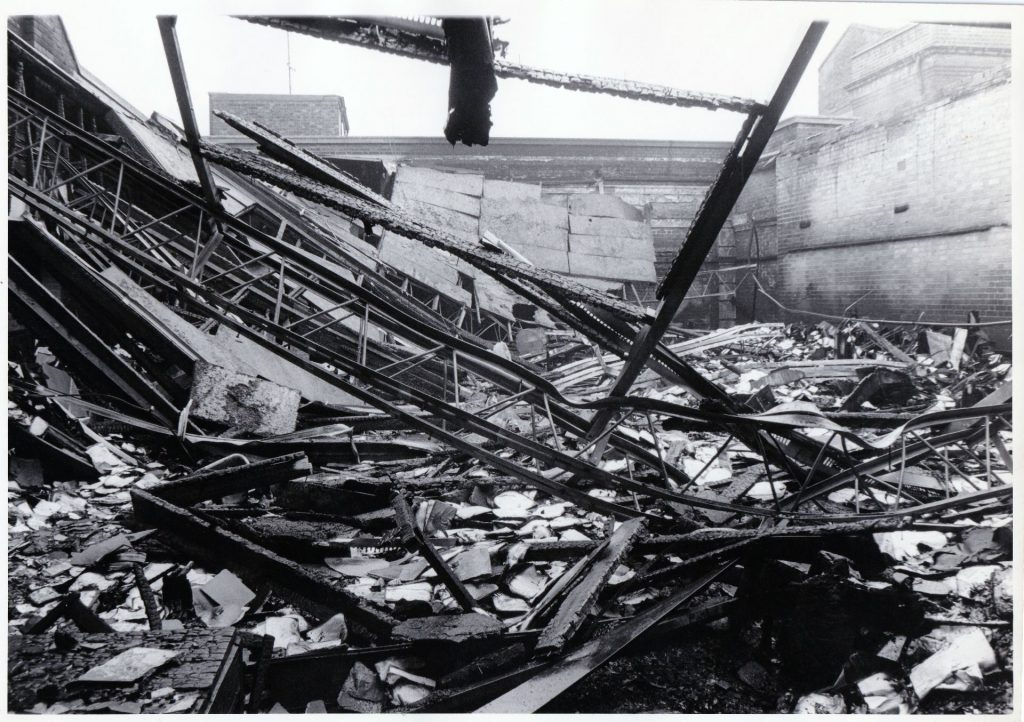
The destruction caused by the fire in Goldsmiths’ College library in March 1971. Image: Goldsmiths’ archives.
For three to four years between 1968 and 1971 Malcolm McLaren, then known as Malcolm Edwards, was a charismatic, enigmatic, disruptive and strikingly original art student activist at Goldsmiths’ College.
It seems likely his behaviour as a Situationist Marxist was being regularly reported to Metropolitan Police Special Branch and then on to MI5.
He helped instigate the biggest, loudest and most memorable art and music festival in the university’s history.
It’s never been repeated because when King Crimson played the back field, they could be heard loudly and clearly in Hilly Fields Park near Ladywell- well over a mile away.
So many thousands descended on the College grounds- lured there with the exaggerated and false promise of Pink Floyd and the Rolling Stones, College security and the police surrendered all hope of controlling the numbers.
The scent of marijuana was in the air and lying and rolling around on the grass in the summer sunshine, it could be said people got to know each other much more intimately than would normally be expected in an educational environment.
Malcolm left Goldsmiths without completing his degree, spooked the senior management of the College by invading and squatting in their meetings with ‘silent staring’, stole the library’s most expensive art books to sell to Charing Cross Road rare book dealers and later confessed to burning down the College library to cover his traces.
It’s also been claimed he assaulted Andrew Forge, the chair of the Art School’s Academic Committee with a copy of Chairman Mao’s ‘Little Red Book,’ and the agitation and student unrest he fomented generated intolerable stress for the Art School’s Principal.
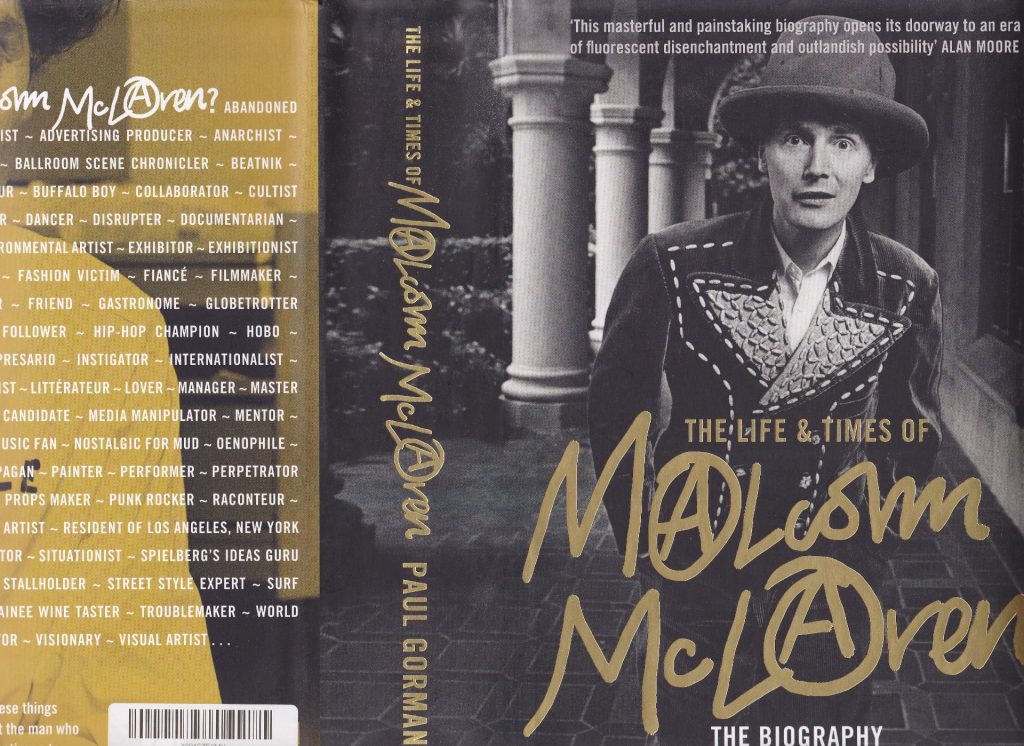
Cover of the much-acclaimed biography of Malcolm McLaren by Paul Gorman, published by Constable in 2020
In 2020 the back cover of his acclaimed biography by Paul Gorman offered some 86 descriptions and identities to attempt to answer the question ‘Who was Malcolm McLaren?’
Many of his contemporaries and alumni interviewed for the Goldsmiths’ History project would agree with ‘troublemaker, anarchist, exhibitionist, media manipulator, and Situationist.’
Those sympathetic to his complex and creative personality would also agree with ‘cultist, art student, enabler, friend, iconoclast, humorist, performer, painter, raconteur, romantic, visual artist and visionary.’
In popular culture, the Guardian said Malcolm McLaren was ‘the Manager of the Sex Pistols and a pivotal influence on late 20th-century pop culture.’
Dave Simpson wrote that the impresario ‘was one of the pivotal, yet most divisive influences on the styles and sounds of late 20th-century popular culture.’
He is perhaps best known as manager of the Sex Pistols, the punk-rock band that was a rude and loud cultural counter-point to the Queen’s silver jubilee in 1977. When he died in 2010, the BBC reminded us that ‘he was arrested on the Queen’s Silver Jubilee after sailing down the Thames on a boat with the band while they played their anti-establishment song God Save The Queen.’
The lyrics continued: ‘The fascist regime, They made you a moron, A potential H bomb’ when sailing by the Palace of Westminster.
Simpson said: ‘With his first partner, the designer [now Dame] Vivienne Westwood, he popularised looks from punk to fetish, which still dominate the fashion world.’
The journalist Julie Burchill once said ‘we are all children of Thatcher and McLaren.’
